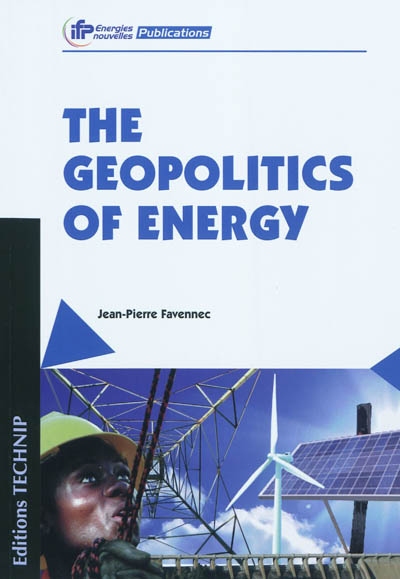en savoir plus

Permet à tous ses détenteurs d'obtenir 5% de réduction sur tous les livres lors du retrait en magasin (réduction non cumulable avec les réductions de type étudiant).
Offre également un certain nombre d'avantages auprès de nos partenaires.
Avec les favoris, retrouvez dans un espace les sélections effectuées au fur et à mesure de vos navigations dans le site.
Constituez pour votre usage personnel vos listes de livres en prévisions d'achats futurs et votre sélection d'articles, dossiers, événements, vidéos ou podcasts préférés ou à découvrir plus tard...
Il suffit simplement de cliquer sur "Ajout Favori" sur chaque page qui vous intéresse pour les retrouver ensuite dans votre espace personnel.
Requiert un compte Mollat
Requiert un compte Mollat
The geopolitics of energy
Auteur : Jean-Pierre Favennec
en savoir plus
Résumé
Panorama des différents enjeux du marché de l'énergie : la production des énergies, leur avenir, les Etats producteurs, les contraintes d'approvisionnement. ©Electre 2025
Quatrième de couverture
Rarely has the world's energy sector known such a complicated and fragile environment as that being experienced in 2011. Energy demand is increasing rapidly because of growth in the developing countries. It is largely met by fossil fuels: oil, natural gas and coal, and also by hydraulic and nuclear power.
The use of all these forms of energy now gives rise to controversy. A year after the uncontrollable oil leaks from the Macondo well in the Gulf of Mexico, the consequences of the accident are still being debated. The development of shale gas, currently the source of half natural gas production in the United States, meets strong opposition in a number of European countries. Even more serious, the accident at Fukushima has put into question the future development of nuclear power, particularly in Europe but also in the USA. There is considerable criticism of the use of coal, which is the source for most of the energy needs in China and a number of developing countries, because of its emissions of CO2 and other pollutants. Even traditional biomass, whose use leads to deforestation and to respiratory diseases, and the development of hydraulic power are the subject of debate.
How should one judge between these different energies? How can decisions be taken between reducing consumption and increasing production? What is the future for new renewable energies?
These are the issues at stake on the energy sector.
This book appears just at the right time to provide clear and well documented replies to the questions that all of us, as energy users, are posing. How are the different forms of energy produced? What does the future hold for them? Who are the players active in the energy scene? What are the supply constraints? What is the impact of the strong growth in India and China on energy resources?
The book is in two parts. The first sets out the major characteristics of the energy sector. The second provides an analysis of the global energy issues region by region and details the geopolitical aspects.
This work is well illustrated and accessible to all, as it does not require any specific prior knowledge. It will particularly interest readers seeking a global perspective of a sector that is fundamental both to our economy and also for our international policies.
Fiche Technique
Paru le : 30/06/2011
Thématique : Economie générale
Auteur(s) : Auteur : Jean-Pierre Favennec
Éditeur(s) :
Technip
Collection(s) : IFP-Institut français du pétrole publications
Contributeur(s) : Préfacier : Jean-Marie Chevalier - Traducteur : Michelle Morton
Série(s) : Non précisé.
ISBN : 978-2-7108-0970-8
EAN13 : 9782710809708
Reliure : Broché
Pages : XX-288
Hauteur: 24.0 cm / Largeur 17.0 cm
Poids: 900 g

